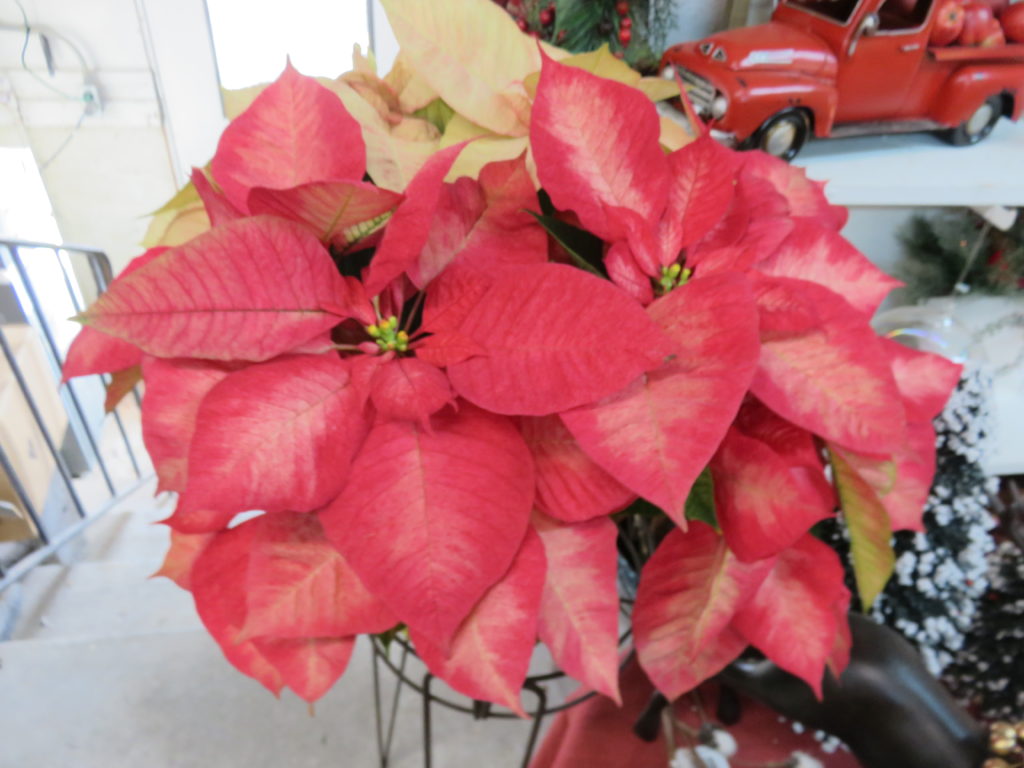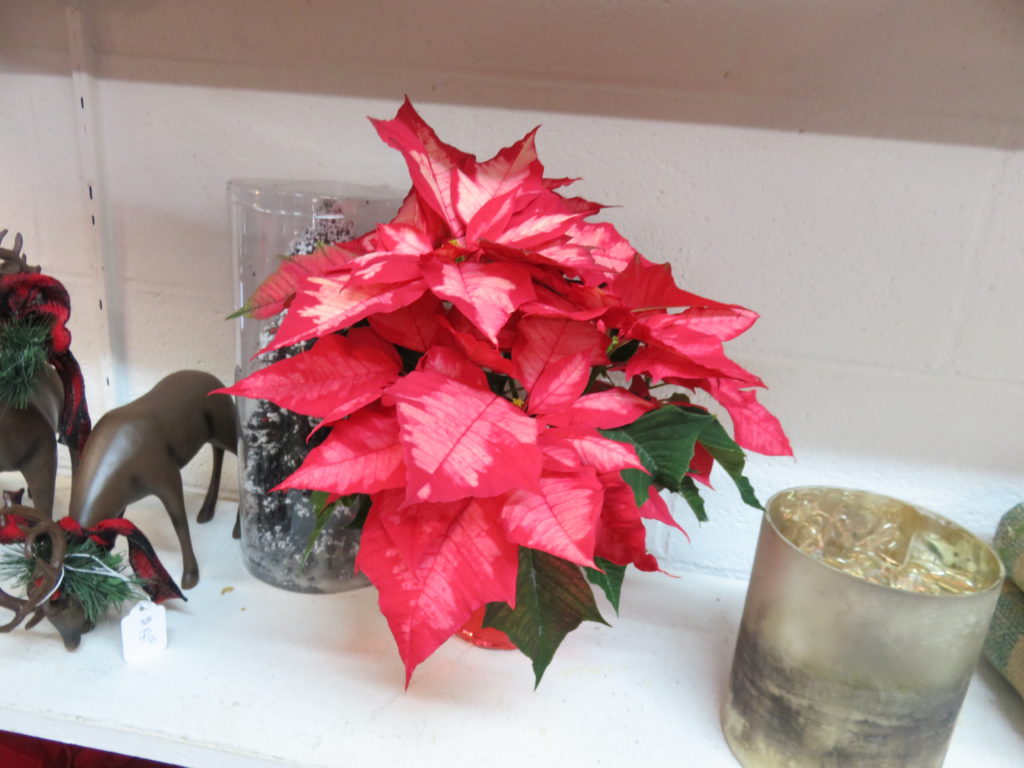Poinsettias (Euphorbia pulcherrima) have become a symbol of the Christmas and winter holiday season. Their colorful bracts (most people call them”flowers”) are actually modified leaves. The tiny “true” flowers are in the center of the bracts. Each year new poinsettia varieties hit the garden shops.
In the mid-19th century, Joel R. Poinsett introduced the poinsettia plant to the United States from Mexico. Poinsett was a botanist, physician and the first U.S. Ambassador to Mexico. In Mexico, poinsettias grow as hardy shrubs to 10-15 feet tall. In the U.S. plants thrive outdoors in south Florida and Southern California gardens (zone 9). In the warmer latitudes poinsettias are sometimes planted outdoors in late summer. Their vivid colored bracts add pizzazz to the late fall and winter landscape. Plants withstand night temperatures in the upper 30’s.

A member of the botanical family Euphorbiaceae, leaves and stems ooze milky sap when cut. However, no parts of a poinsettia plant are deadly poisonous. Some people and pets may be sensitive to the plant’s sap which may cause a skin irritation.
Tips on purchasing: before buying a poinsettia, know that the true flowers are fully formed and should be tightly closed at time of purchase. If the yellow pollen sacs have shed or the flowers have dried out, do not purchase. Once the flowers start to age, the colorful bracts soon decline. The plant may look poorly on Christmas Day.
Care In The Home: place your poinsettia near a sunny
south- or east -facing window of your house or apartment. Room temperatures should be between 65 to 75 °F. Poinsettias thrive in a well-drained soil-less media (potting mix). Check media for dryness every few days and water the pot thoroughly; allow any excess water should flow freely out the drainage hole in the container.
Do not leave your poinsettia sitting in water over 3 hours as it may injure the roots. Feed the plant every 2-3 weeks with a water soluble garden or house plant fertilizer @ one-half the rate on the package directions. Your poinsettia should continue to look pretty on the first day of spring.

Over 100 varieties of poinsettias are available at garden shops, grocery stores, and area greenhouses. Varieties come small, medium and large sizes and in colors ranging from traditional red, white, pink, burgundy, marbled, and speckled.

 Posted in
Posted in 
